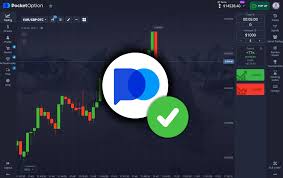
Best Trading Indicators for Beginners on Pocket Option
If you’re new to trading or looking to enhance your trading strategies, understanding the best trading indicators for beginners on pocket option best trading indicators for beginners on pocket option is crucial. Trading indicators can help you make informed decisions, identify market trends, and determine the right entry and exit points.
Trading indicators are mathematical calculations based on a security’s price and volume. They provide insights into potential future price movements by analyzing past data. For beginners on Pocket Option, choosing the right indicators can simplify the trading process and improve your chances of success. In this article, we will explore some of the best trading indicators for beginners, explain how they work, and provide tips on how to use them effectively.
Understanding Technical Indicators
Before we delve into the best trading indicators, it’s essential to understand what technical indicators are. These tools help traders analyze past price movements and predict future price trends. In general, they fall into two categories: trend indicators and momentum indicators.
Trend indicators, such as Moving Averages, help traders identify the direction of the market trend. Momentum indicators, like the Relative Strength Index (RSI), indicate the strength of a trend. Both types of indicators are essential for making informed trading decisions.
1. Moving Averages
Moving Averages (MAs) are one of the most popular and straightforward indicators used by traders. They smooth out price data over a specific period, making it easier to identify trends. The two most common types of moving averages are the Simple Moving Average (SMA) and the Exponential Moving Average (EMA).

For beginners, the Simple Moving Average is the best choice. It calculates the average price over a specified number of periods, which helps identify support and resistance levels. When the price crosses above the SMA, it indicates a potential uptrend, whereas crossing below may signal a downtrend.
2. Relative Strength Index (RSI)
The Relative Strength Index (RSI) is a momentum indicator that measures the speed and change of price movements. It ranges from 0 to 100 and is typically used to identify overbought or oversold market conditions.
An RSI above 70 indicates that an asset may be overbought, while an RSI below 30 suggests it may be oversold. For beginners, the RSI is a valuable tool to determine potential reversal points in the market. Combining the RSI with other indicators, like the Moving Average, can provide even more robust signals.
3. Bollinger Bands
Bollinger Bands consist of three lines: a middle line (SMA) and two outer bands that are standard deviations away from the SMA. This indicator helps traders understand volatility in the market. When the bands contract, it suggests lower volatility, and when they expand, it indicates higher volatility.
For beginners, Bollinger Bands can be used to determine potential reversal points. If the price touches the upper band, it may indicate overbought conditions, while touching the lower band may signal oversold conditions. This indicator is particularly useful in trending markets, as it can help identify breakout opportunities.
4. MACD (Moving Average Convergence Divergence)
The Moving Average Convergence Divergence (MACD) is a trend-following momentum indicator that shows the relationship between two moving averages of a security’s price. It consists of the MACD line, signal line, and histogram.

Beginners can use the MACD to identify changes in momentum and trends. When the MACD line crosses above the signal line, it generates a bullish signal, while crossing below generates a bearish signal. This indicator is particularly useful for identifying potential entry and exit points in trending markets.
5. Stochastic Oscillator
The Stochastic Oscillator is a momentum indicator that compares a security’s closing price to its price range over a specific period. It ranges from 0 to 100 and is useful for identifying overbought and oversold conditions.
A Stochastic value above 80 indicates that the asset may be overbought, while a value below 20 indicates oversold conditions. This indicator can be combined with other tools to provide more accurate signals. It’s particularly helpful for beginners looking to identify potential market reversals.
Tips for Using Indicators Effectively
While indicators are powerful tools, using them effectively requires some knowledge and practice. Here are a few tips for beginners on Pocket Option:
- Combine Indicators: Relying on a single indicator can lead to false signals. Combining multiple indicators can provide more accurate trading signals and improve your decision-making.
- Use Different Timeframes: Analyzing indicators across different timeframes can help you gain a better understanding of price movements and trends.
- Backtest Strategies: Before implementing any strategy in live trading, consider backtesting it using historical data. This can help you understand how well the indicators would have performed in different market conditions.
- Practice on a Demo Account: Pocket Option offers a demo account feature that allows you to practice trading with virtual funds. Use this opportunity to familiarize yourself with the indicators and develop your strategies without risking real money.
- Stay Informed: Keep an eye on market news and events that may impact asset prices. Indicators are helpful, but they should be used alongside fundamental analysis.
Conclusion
In conclusion, understanding and using trading indicators effectively can significantly enhance your trading experience on Pocket Option. By familiarizing yourself with tools like Moving Averages, RSI, Bollinger Bands, MACD, and the Stochastic Oscillator, you can make informed trading decisions and improve your chances of success. Remember to practice, combine indicators, and stay informed about market conditions to develop a well-rounded trading strategy.